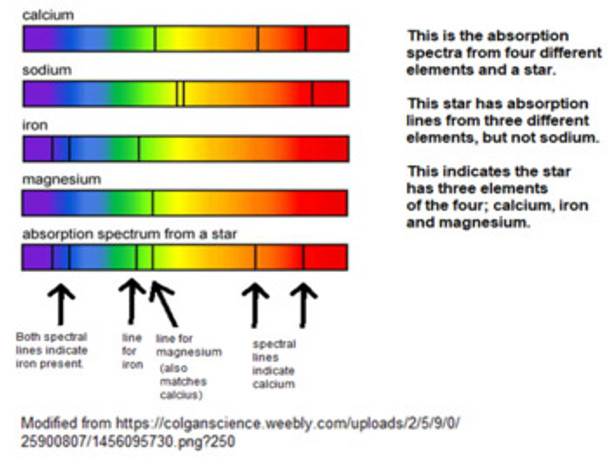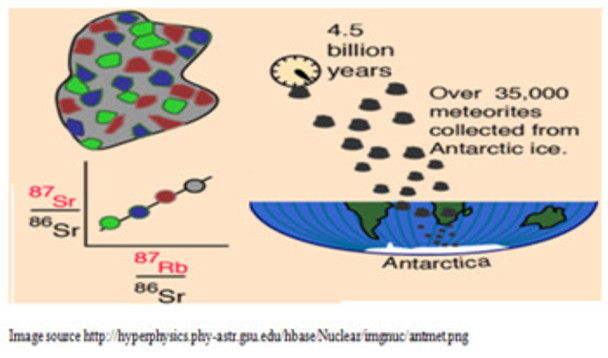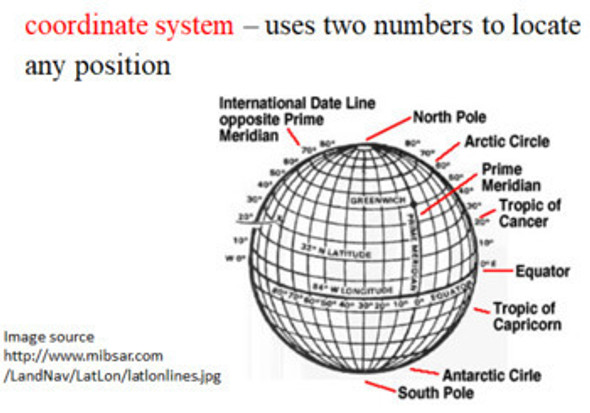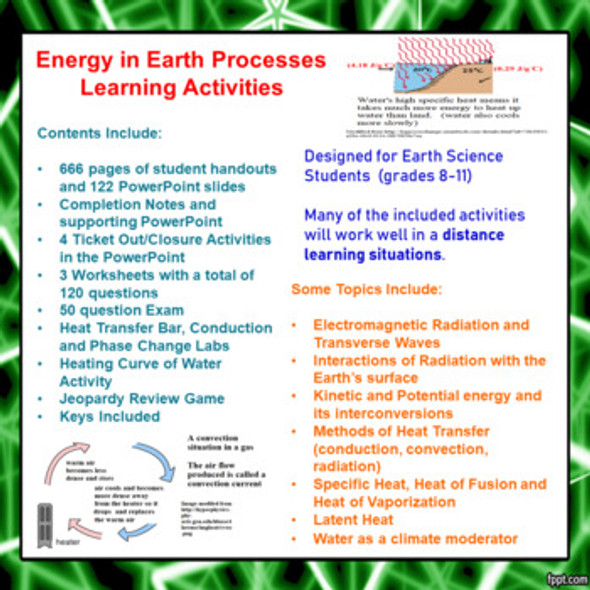Description
This zip file contains many different activities (66 pages of student handouts and a PowerPoint with a total of 59 slides) which can be used to compose a unit introducing concepts involving the earth in the universe. Some of the concepts addressed include the origin of the universe and solar system, using HR diagrams to characterize stars, star evolution, the components of the solar system, Kepler's first and second laws, eccentricity and the position of a planet in its orbit in relation to its time of revolution and orbital velocity. The learning objectives and specific contents of this set of materials is listed below. This set of activities is suited for many earth science, environmental science or physical science classes. With teacher guidance, many components in these materials are adaptable to an enriched middle level science curriculum.
All documents are in PowerPoint, word or pdf format to allow you to edit the documents to meet your needs. These documents are well suited for use in distance learning environments. Answer keys for all student activities are provided.
The specific contents of materials in the package are as follows:
- The Earth in the Universe Completion Notes (18 pp.)
- PowerPoint to accompany the Completion Notes (59 slides)
- Universe and Evolution of Stars Worksheet (5 pp.) (21 questions)
- Solar System and Kepler's Law Worksheet (12 pp.) (44 questions)
- HR Star Diagram Reading/Graph Interpretation Lab Activity (4 pp.)
- Kepler's Law Lab (14 pp.)
- The Earth in the Universe Exam (11 pp.) (50 questions)
- Learning Objectives including NGSS, Common Core and NY State Core Curriculum (2 pp.)
NGSS Standards Addressed
HS-ESS 1-1, HS-ESS 1-2, HS-ESS 1-3, HS-ESS 1-6
NY State Earth Science/Physical Setting Core Curriculum
Key Idea and/or Performance Indicators Addressed
Standard 1: Key Idea 2
Standard 6: Key Idea 3, Key Idea 4
Standard 4: Key Idea 1, Performance Indicator 1.1 (Major Understandings 1.1 a, 1.1b.
Standard 4: Key Idea 1, Performance Indicator 1.2 (Major Understandings 1.2a, 1.2b, 1.2c, 1.2 d)
Common Core State Standards Connections:
ELA/Literacy
RST.11-12.1, RST.11-12.8, WHST.9-12.1, WHST.9-12.2
Mathematics
MP.2, MP.4, HSN-Q.A.1, HSN-Q.A.2, HSN-Q.A.3, HSA-SSE.A.1, HSS-ID.B.6
Learning Goals
Upon the completion of this unit the student will be able to:
1. explain what is meant by the universe.
2. recognize the universe started with the Big Bang about 13.8 billion years ago.
3. recognize that most atoms early in the history of the universe were hydrogen and helium.
4. list three evidences supporting the occurrence of the Big Bang.
5. explain how the red shift supports the concept of an expanding universe.
6. explain what a galaxy is and how they are classified.
7. recognize our galaxy is the Milky Way.
8. explain that our Sun and other stars are powered by the nuclear fusion of hydrogen.
9. define the terms luminosity and absolute magnitude.
10. recognize the classification system for stars groups them by surface temperature compared to their luminosity.
11. recognize the color of a star is related to its surface temperature.
12. describe how absorption spectra are used to identify the elements composing stars.
13. recognize that most stars including our Sun are main sequence stars.
14. compare giant and super giant stars to main sequence star by their characteristics.
15. describe white and black dwarf stars.
16. classify stars using an HR diagram.
17. explain what a nebula is and discuss their role as a star nursery.
18. recognize the evolutionary stages and lifespan of a star depend upon its original mass.
19. discuss the typical aging process of a main sequence star.
20. explain what a supernova is and recognize it can lead to a neutron star or a black hole.
21. distinguish between neutron stars and black holes.
22. discuss the way different elements are formed by main sequence stars and by a supernova.
23. list and briefly describe six major components of our solar system.
24. recognize our Sun contains over 99% of the mass of our solar system and that most of our solar system is empty space.
25. distinguish between a meteoroid, meteor and meteorite.
26. explain why the terrestrial planets have more impact craters than the Jovian planets.
27. explain why celestial objects such as lunar rocks, asteroids and meteorites provide information about the formation and history of the early earth.
28. briefly describe how the solar system was formed five billion years ago.
29. recognize that impact events have been linked to global climate changes and mass extinctions.
30. list and describe major characteristics with terrestrial planets.
31. list and describe major characteristics of Jovian planets.
32. list and briefly describe three types of planetary motions.
33. explain Kepler's first law.
34. calculate the eccentricity of an ellipse.
35. relate eccentricity values to orbital shapes.
36. explain Kepler's second law.
37. recognize the Sun is at one of the foci of the planetary ellipse.
38. define the terms aphelion and perihelion.
39. identify when the earth is closest and furthest from the Sun.
40. list two factors influencing gravitational pull and describe the influence of these factors.
41. recognize orbiting bodies operate in a balance between gravitation and inertia.
42. recognize the closer a planet is to the Sun; the lesser its revolution time, the smaller its orbit and faster its orbital velocity.
Terms of Use
Purchase of the product is for classroom use by the purchaser only. It is a violation for individuals, schools, and districts to redistribute or sell this item on the Internet or to other individuals. I do encourage you to use and edit these documents to suit your needs with your own students in distance learning environments.
This work is licensed under a Creative Commons Attribution-NonCommercial-ShareAlike 4.0 International License.


















